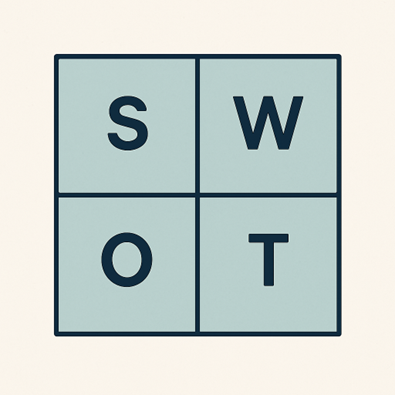The best way to outcompete isn’t just to analyze your competition—it’s to see yourself through your customer’s eyes.
It’s easy to build strategy from the inside out: catalog your strengths, patch your weaknesses, and assume your product’s unique attributes will carry the day.
But real competitive advantage comes from flipping that view. The “Ability to Win” framework—our favorite replacement for SWOT—starts with what customers value, then evaluates how well you (and your competitors) deliver. Add AI to the mix, and this tool becomes a dynamic engine for focus, alignment, and even ROI modeling.
1. What Do Customers Actually Care About?
The hardest part of competitive analysis isn’t collecting internal opinions—it’s identifying the real decision drivers. Why do customers choose your solution? And just as importantly, why don’t they?
This is where AI shines. It helps break free from the “cabbage trap”—the tendency to fixate on commonly accepted benefits (like safety or basic functionality) that don’t actually differentiate. AI can sift through digital signals, market commentary, and competitive messaging to isolate the benefits that matter—and weed out the ones that don’t.
Now, instead of guessing what drives choice, you can start with a focused, evidence-based benefit set that reflects real buyer thinking.
2. Simulate, Prioritize, and Kill with Confidence
Once you’ve mapped the benefits that matter and rated your position vs. competitors, AI can help you simulate potential investments. What would happen if you improved perception on one key benefit? What would it take to shift market share by 5%? What’s the ROI of investing in this feature vs. that service?
This isn’t theoretical. With AI-enhanced modeling, clients can test scenarios quickly and even forecast impact in dollars. Sometimes it validates a plan. Other times, it provides the evidence to walk away from a market or project that simply won’t deliver.
Both are wins.
3. Add the Missing Layer to Your SWOT
We get it—SWOT is familiar, and teams like to use it. But traditional SWOT is based on internal assumptions, not market truth. By pairing it with Ability to Win, you can bring rigor to your strengths and weaknesses: outside-in data, ranked benefit importance, and clear comparisons to competitors.
It turns gut feel into evidence—and keeps teams aligned on where to invest, where to position, and where to walk away.

 Mary Abbazia
Mary Abbazia Tom Spitale
Tom Spitale Sean Welham
Sean Welham


